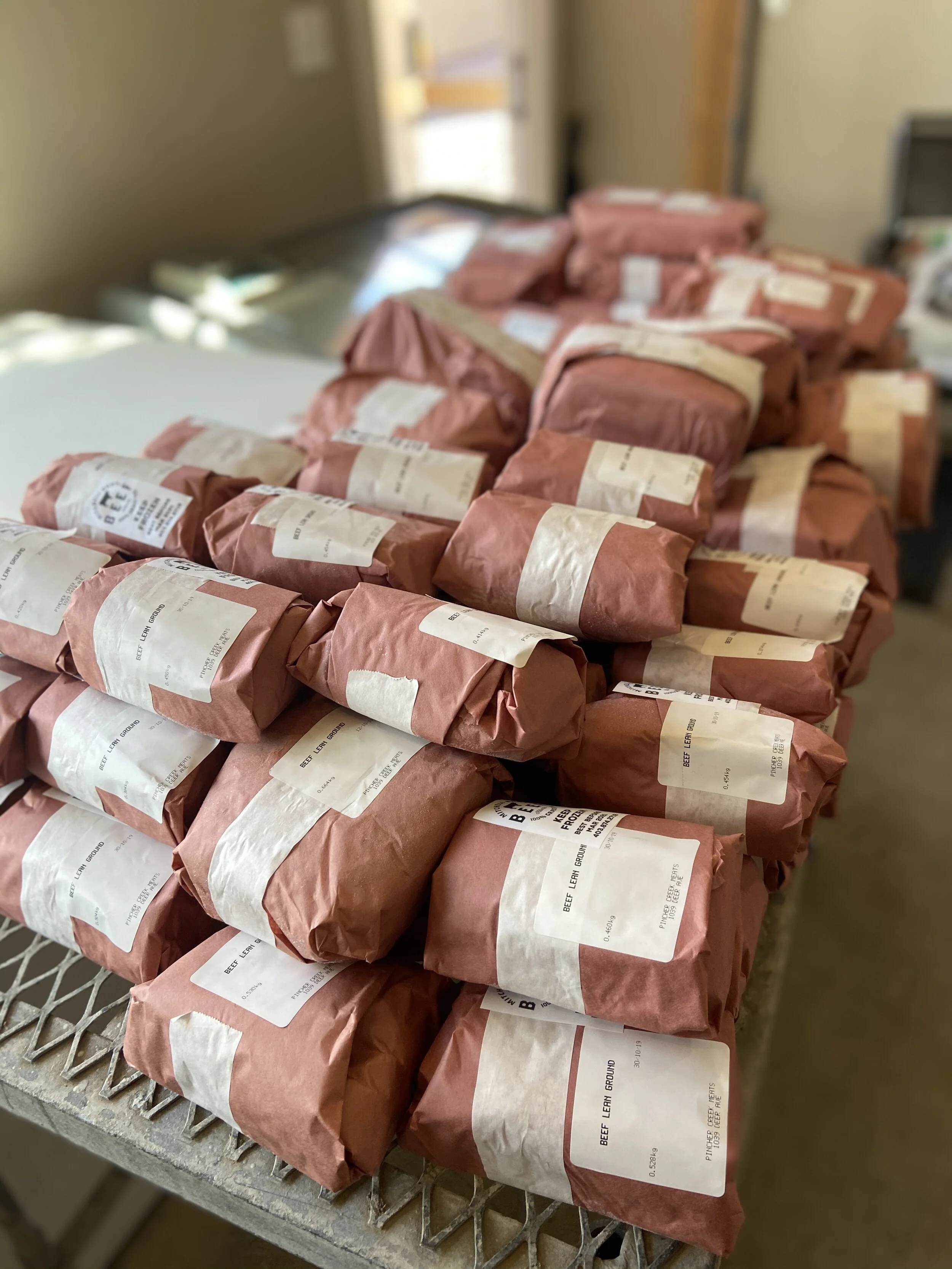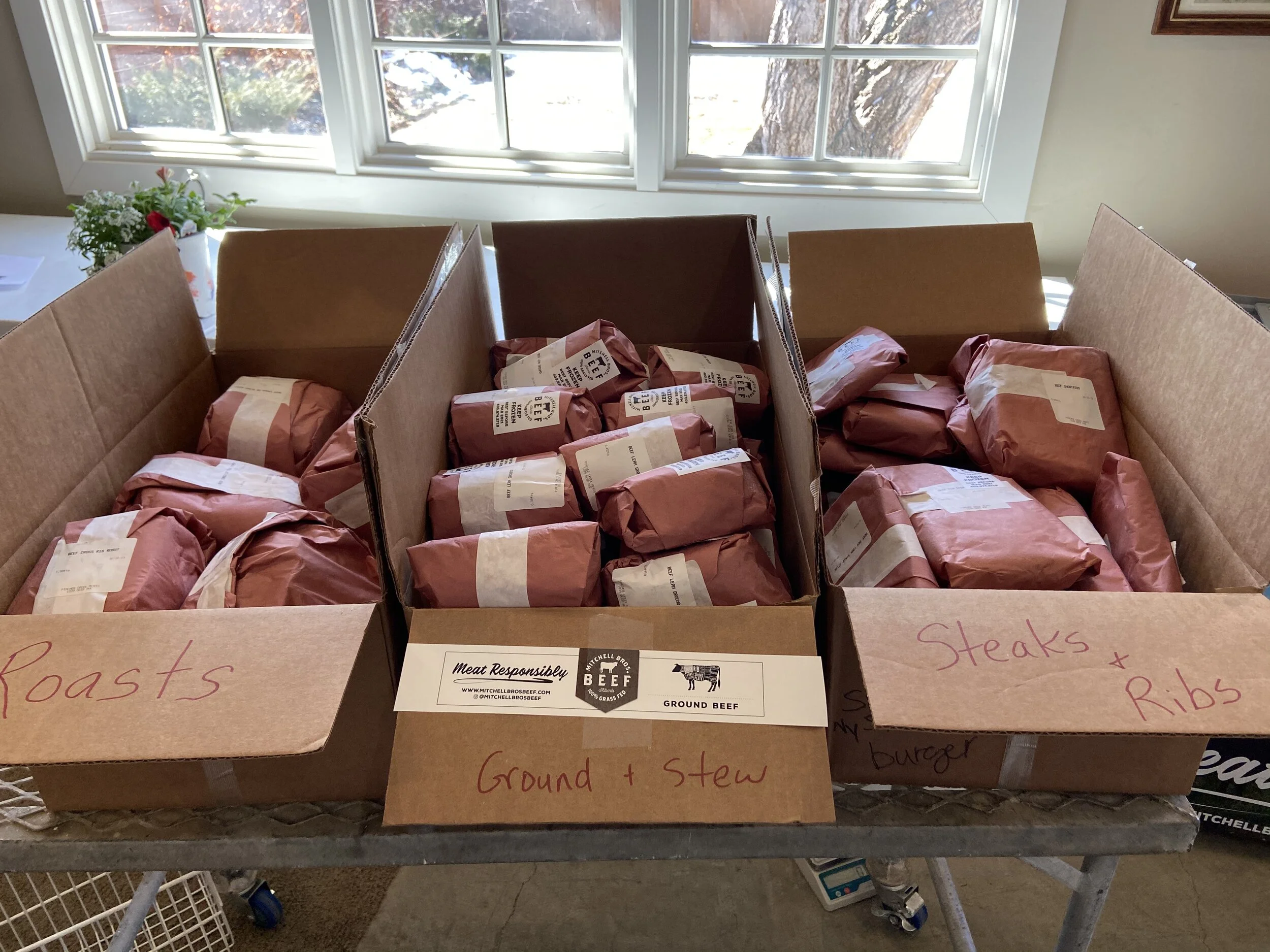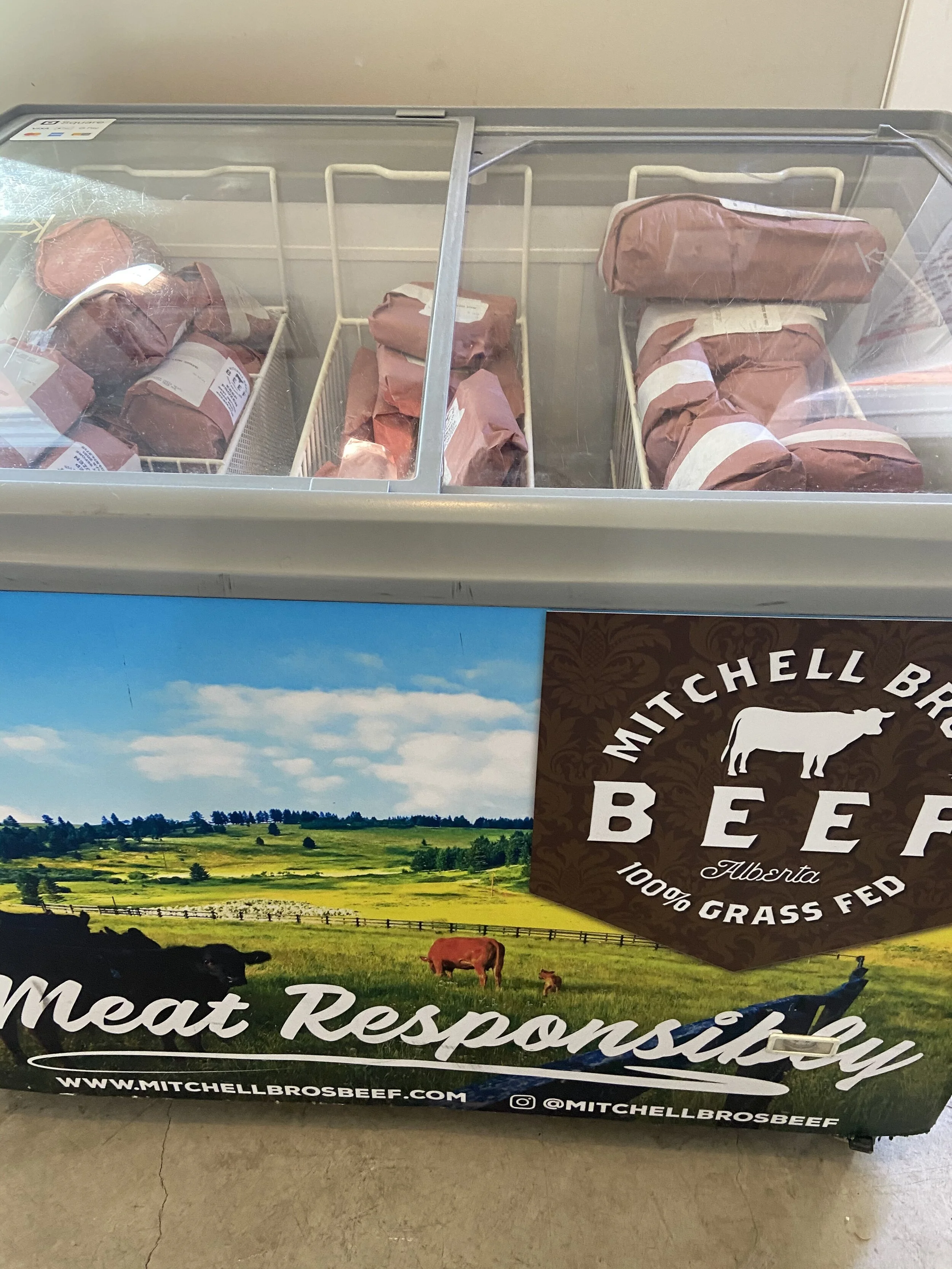BUYING BEEF DIRECTLY FROM YOUR RANCHER IS THE MOST ECONOMICAL WAY TO GUARANTEE A YEAR ROUND SUPPLY OF PREMIUM GRASS FED, GRASS FINISHED BEEF FOR YOUR FAMILY
Mitchell Bros. Beef is available directly from us, the Ranchers, in either a 1/4 Cow, 1/2 Cow or Whole Cow order. Our grass finished beef is a seasonal product, with our butchering happening between August and October each year. After slaughter, our beef dry ages for 21 days before being cut and wrapped to your specifications. When you order a 1/4, 1/2 or whole, your beef will be available for you in the fall 2023, depending on the processing date.
Last year our cattle had a wonderful spring and summer and finished beautifully at around 1200 pounds. This winter has been long and cold in the hills BUT the animals have weathered it well and look amazing. We are now enjoying a beautiful spring and the green grass its well on it’s way!
WE HAVE LIMITED AVAILABILITY FOR OUR 2023 FALL HARVEST
If you’re looking for a 1/4, 1/2 or Whole Cow, we can definitely get you set up!
Your beef cost is $5.00/pound hanging weight plus processing. Our processor - Bear Butchering - charges $1.00/lb hanging weight. There is also a fee associated with slaughter $150.00 (see definition of hanging weight below).
A $500.00 DEPOSIT for 1/4’s is now being accepted. See buttons below to leave your deposit. ($1000.00 for 1/2’s, $2000.00 for wholes)
FYI - The total cost for a 1/4 is between $100-$1300 depending on the hanging weight of the animal. The balance, after your $500 deposit, will be due on delivery. (sides of beef average $2000-$2400 in total, and whole beef average $4000-$4800 depending on the hanging weight of the animal).
How Ordering Works
1) Choose the size of order you want and click on picture to pay your deposit,
2) In June, we will send cut sheet and help you fill it out especially if this is your first order,
3) In August, the steers are slaughtered on the ranch and taken to Bear Butchering for 21 day dry aging. They are then cut and wrapped to your specifications,
4) In September and October, you are invited to come to ranch for visit and then pick up your order at Bear Butchering OR arrange delivery in Calgary
5) The balance of your payment is due when you pick-up or beef is delivered
6) You will enjoy beautiful healthy beef all year long!
If you have questions about this process, contact Bette:
CATTLE WEIGHTS
What is the difference between ‘hanging weight’ and just plain ‘weight’?
When it comes to beef weights, there are 3 different ones of which customers should be aware. of:
Live weight. This is what the animal weighed on the hoof, or when it was alive. (for us, our animals come off our grass weighing around 1200 pounds.
Hanging weight. This is the weight that the butcher gives us after the animal has been taken back to the butcher shop to hang. The weight difference from live to hanging is from loss of blood, head, hide, hooves, viscera, lungs and heart. The hanging weight is usually about 40% of the live weight. (1200 lb animal would have an estimated hanging weight of 720 lbs)
Final” or “take-home” weight. This is the weight of the meat that each customer will bring home. This weight is usually about 60-65% of the hanging weight. So for a 180 lb quarter share, the final weight would be about 108-117 lbs (estimated).
By the way, the weight is lost in 2 ways. About 4% is water weight lost during the 21 day period that the carcass is hung (or “cured”). Then about another 30-35% is lost during the cutting process. This amount is variable based on 2 factors – one is the amount of fat in the meat, and the other is the cuts that a customer requests. Higher fat means more loss. (Our grass-fed beef animals tend to be lower fat, so the loss tends to be closer to 35%.) Also , the more boneless cuts requested by the customer, the lower the final weight. (Note that the lower weight doesn’t mean that you are receiving less meat – rather, you are receiving fewer bones).




